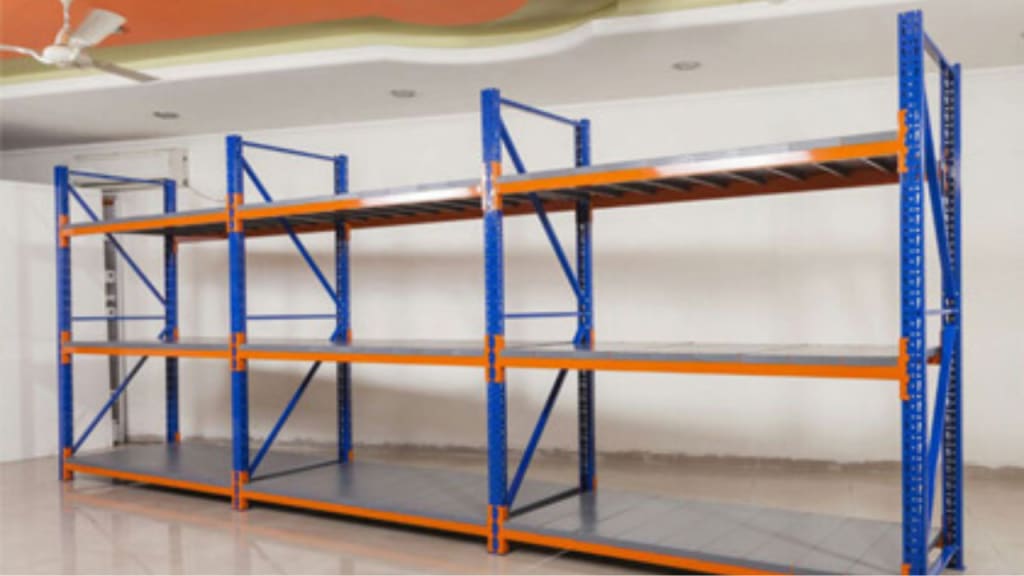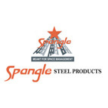Understanding the Essential Safety Features of Heavy-Duty Racks
Heavy-duty racks are quite an important thing in a warehouse and an industrial setting since they offer rigid storage solutions for large and bulky items. In other words, these racks are designed to take substantial weight capacities, and therefore they are quite imperative in the logistic, manufacturing, and distribution sectors where efficient storage and organization are paramount.

While the very essence of heavy-duty racks is to ensure great storage capacity, their safety features are equally as important. Manufacturers have implemented a variety of safety features into these racks to prevent accidents, increase stability, and save both personnel and stored-up goods. Being able to understand these safety features is one of the key elements in maintaining a secure and productive warehouse.
Structural Integrity and Design
The foundation of safety in Heavy-Duty Racks Manufacturers comes from their structural design and integrity. Essentially, they are fabricated from high-quality steel or durable alloys known to have great strength and resilience. Structural members, including upright frames, beams, and connectors, have been designed to support loads that are very heavy without deformation.
Load Capacity and Weight Distribution
One of the basic considerations in relation to safety has to do with a heavy-duty rack's load-carrying capacity. In truth, manufacturers do specify a maximum weight capacity for each configuration of the rack and every level of the shelves. Considering specifications, one should be strict to avoid overload, which could compromise the structural integrity of the racks and sometimes cause collapse.
Added to that is proper weight distribution throughout. Heavy-duty racks often have a load-carrying beam, which can also include cross-bracing to distribute heaviest weights uniformly across the rack system so that it continues to provide stability and avoids non-uniform loading, adding to rack failure.
Safety Pins and Locking Mechanisms
Safety pins and locking mechanisms are critical safety features incorporated into heavy-duty racks. These components secure beams and upright frames in place, preventing accidental dislodgment and ensuring structural stability. Safety pins are typically inserted into beam connectors to lock them securely into position, providing an additional layer of safety against lateral forces.
Beam Connectors and Bolted Connections
These connectors could be connected to beams and upright frames of heavy-duty racks and may be teardrop or bolted in design. On the contrary, bolted connections enhance carrying capacity with stability and strength. The manufacturers can give detailed instructions on the assembly regarding bolt tightening to ensure that the connection is secure and can sustain loads and the stresses of operation.
Shelf Decking and Mesh Panels
Shelf decking in heavy-duty racks provides a flat surface for goods storage. Many manufacturers offer it in different decking options, like solid steel panels, wire mesh grids, and shelving made of particle board. Each decking type allows for the load capacity and intended use. Mesh panels allow for better visualization and ventilation; solid panels provide a flat surface on which smaller things can be stored securely.
Floor Fixing and Anchoring Systems
Floor fixing and anchoring systems are essential safety devices for warehouses prone to seismic activity and those that generally handle frequent forklift operations. These are systems attached to the base of heavy-duty racks onto the warehouse floor to prevent movement or displacement caused by loading and offloading activities. Anchoring the racks to the floor using floor anchors and expansion bolts enhances stability, minimizing the risks of tippling or collapsing.
Rack Protection Accessories
Manufacturers offer rack protection accessories to prevent accidental damage from forklifts or other warehouse equipment. These accessories include rack guards, end-of-aisle protectors, and column protectors made from durable materials such as steel or impact-resistant plastics. Rack guards shield vulnerable rack components from impact, minimizing the risk of structural damage and ensuring prolonged rack lifespan.
Safety Signage and Load Capacity Labels
Clear and prominent safety signage is essential for identifying load capacities, safe loading practices, and emergency procedures associated with heavy-duty racks. Load capacity labels are affixed to racks to indicate maximum weight limits for each shelf level, guiding warehouse personnel in proper loading and storage practices. Safety signs also communicate cautionary messages, such as weight restrictions and operational guidelines, to promote the safe handling of stored goods.
Regular Inspections and Maintenance
Maintaining safety in heavy-duty racks requires regular inspections and maintenance checks. Warehouse managers and personnel should conduct visual inspections to detect signs of wear, corrosion, or structural damage. Manufacturers often recommend periodic inspections by qualified professionals to assess rack stability, bolt tightness, and overall structural integrity. Prompt repairs and replacements of damaged components are essential for preventing accidents and ensuring continued safe operation.
Training and Safety Awareness
Virtually finally, comprehensive training programs should be part of the safety culture in warehouses equipped with heavy-duty racks. Principles of proper loading and weight distribution shall be a segment of the training courses, together with emergency procedures to be followed in case of rack instability/collapse. This will ensure safety through normal handling practices and assist warehouse workers in detecting and averting any potential dangers ahead of time.
conclusion
Heavy-duty racks incorporate a range of safety features to ensure secure storage and operational efficiency in industrial settings. By understanding and implementing these safety measures, warehouse managers can create a safer work environment while maximizing the storage capacity and longevity of their heavy-duty rack systems. Regular maintenance, adherence to load capacities, and ongoing safety training are essential components of a comprehensive approach to rack safety in any warehouse or distribution facility.
About the Creator
Spangle Steel Products
Spangle Steel Products was established in 1998 in New Delhi and is dedicated to offering unmatched warehousing and storage solutions.
https://www.spanglesteel.in/
Enjoyed the story? Support the Creator.
Subscribe for free to receive all their stories in your feed. You could also pledge your support or give them a one-off tip, letting them know you appreciate their work.






Comments
There are no comments for this story
Be the first to respond and start the conversation.